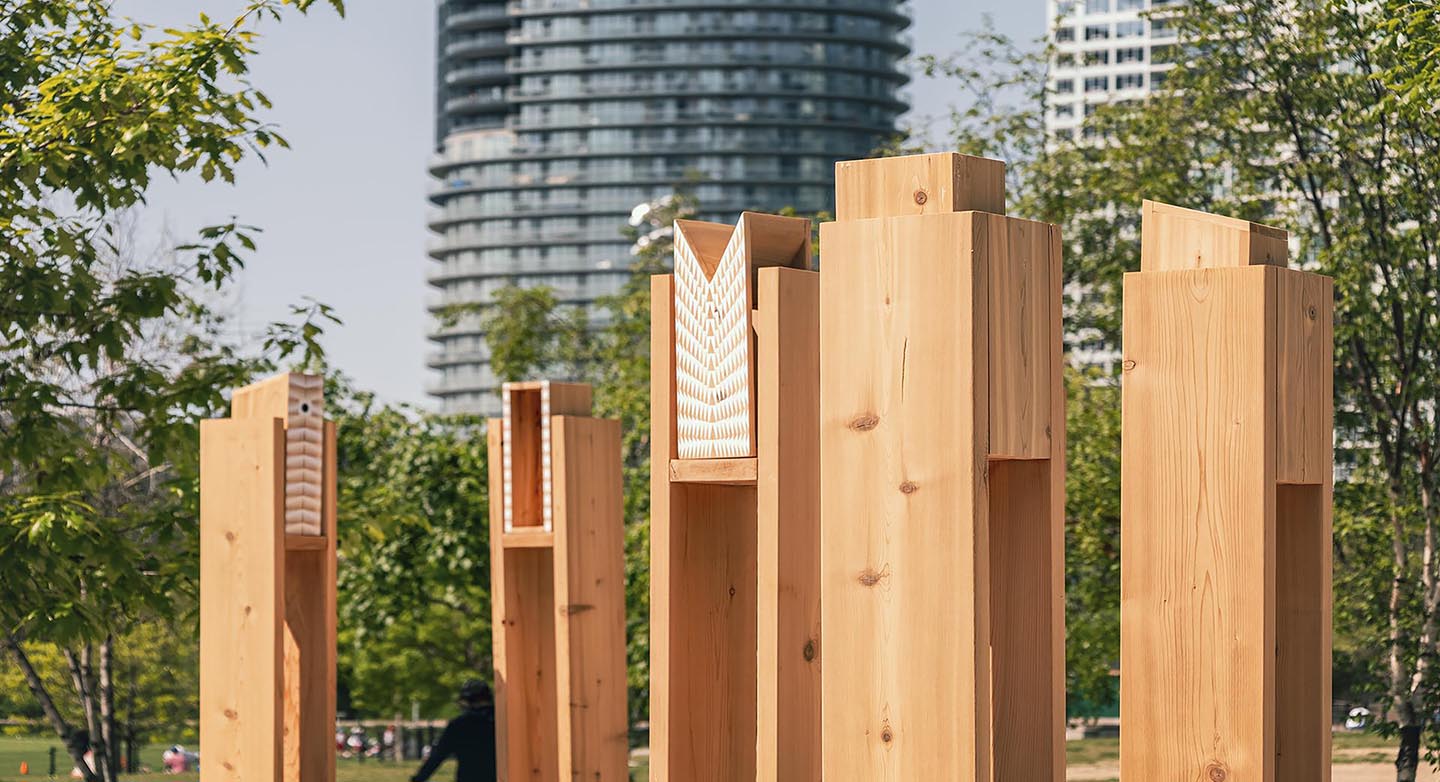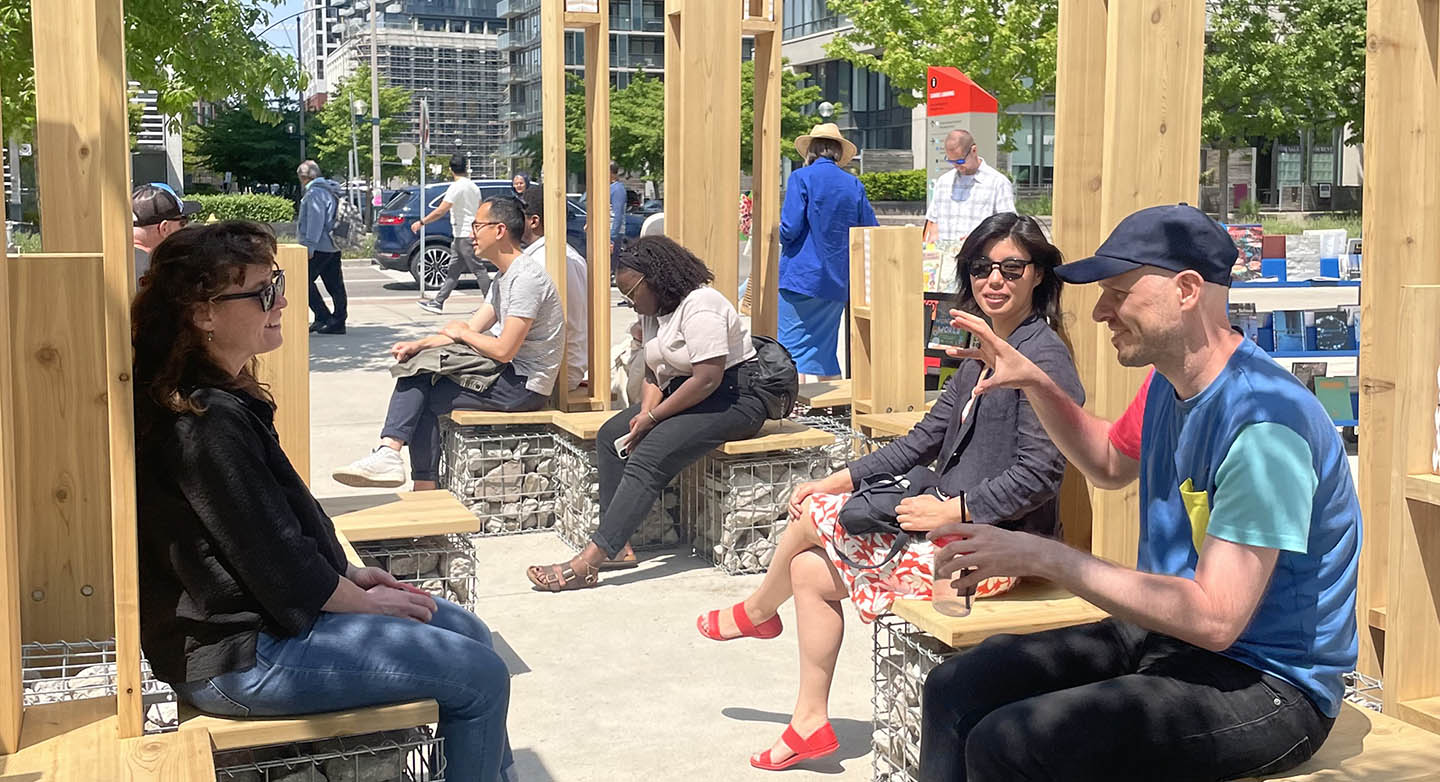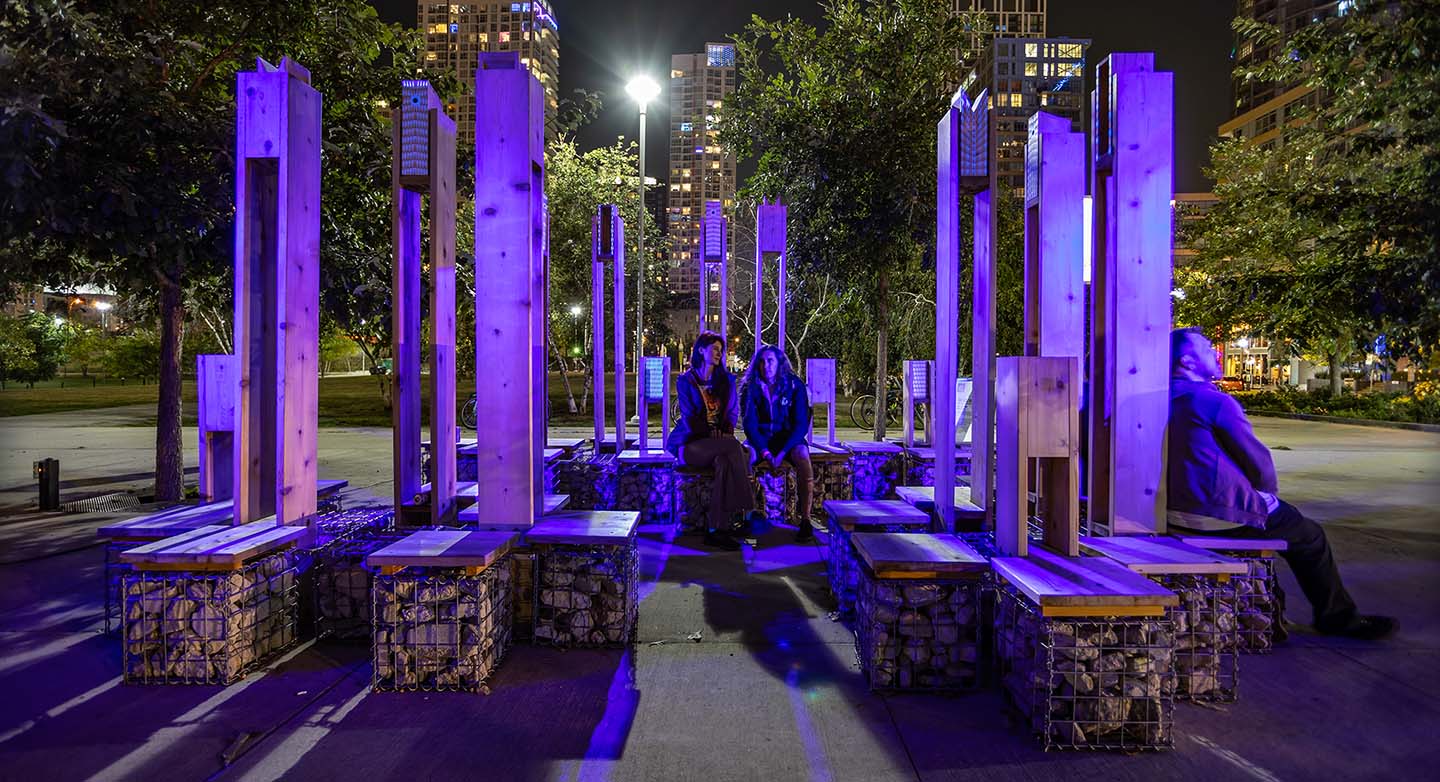Multispecies Lounge
Cohabiting urban public space
Multispecies Lounge is a design intervention that encourages shared co-occupation of public space between species. Composed of an intimately packed array of public seating, the project is an urban “lounge” for human recreation, while it's simultaneously an aggregation of spaces designed for animal inhabitation and awareness including birdhouses, insect habitats, and hibernacula for smaller terrestrial animals. Using renewable resources such as cedar, as well as recycled/upcycled materials such as discarded construction waste, the project’s material ecology advocates for circular economies in design and construction.
The project is commissioned by the Bentway Conservancy, a public arts organization based in Toronto, Canada, that works to activate and reimagine the Gardiner Expressway, an elevated highway running through the city and its surrounding areas. Created for the Bentway’s summer 2023 project and event series, Beyond Concrete, the Multispecies Lounge was specifically designed to draw attention to various species of urban wildlife that thrive under and around the expressway.
While one might not think of highway infrastructures as sites for urban habitats, an exploration of citizen science mapping sites, such as iNaturalist and eBird reveal a multitude of fauna sightings in the area, uncovering hundreds of species in consideration. After consulting with ecologists at the Toronto and Region Conservation Authority (TRCA) to gain a better understanding of local species dynamics, we identified 14 species to highlight, both in terms of design consideration and narrative-building. The installation incorporates habitat conditions for familiar species of popular appeal, such as American robins, barn swallows, and other charismatic songbirds, while equally providing for less-recognized urban fauna such as solitary bees and Dekay's brown snake.

Detail of habitats and structure, Multispecies Lounge, Toronto, Canada, 2023, Joyce Hwang, Nerea Feliz/Double Happiness. Photo © Jack Landau
For the birds, the Lounge incorporates elevated habitats above, which take shape through an interpretation of three bird-nesting types—cavity-nesting, shelf-nesting, and tree-crotch nesting—which resulted in three birdhouse typologies: one that facilitates entry through a single hole (cavity), another that facilitates sheltered nest building under a ledge-like condition (shelf), and a yet another that provides a triangular intersection (tree-crotch).
Solitary bee habitats are placed at eye-level seating, not only to consider the tendency of bees to hover lower toward the ground, but also to bring them closer to the human experience of inhabiting the Lounge itself. Unlike honey bees and others that live in hives, solitary bees live inconspicuously in small, deep holes—often found in logs, tree bark, or even in the ground—and are not often regarded in considering design for bees. The bee habitats provide solid wood boxes with six-inch-deep holes at three different diameter sizes.
For smaller terrestrial animals on the ground, the project focuses on the Dekay’s brown snake, a nonvenomous snake that has been spotted in the area. According to the ecologists at the TRCA, baby Dekay brown snakes are so small and slow that they are often mistaken as worms or not seen at all. Often, they are accidentally killed by passing cyclists. To help provide shelter for these local snakes, the Lounge introduces hibernacula conditions at ground level. Essentially, this is a series of gabion cages filled with concrete debris, providing gaps and small spaces between the rubble for small terrestrial animals to occupy.

A public “lounge” for human and nonhuman inhabitation, Multispecies Lounge, Toronto, Canada, 2023, Joyce Hwang, Nerea Feliz/Double Happiness. Photo © Joyce Hwang
While providing habitat conditions is important in this installation, equally significant are the narratives that enable empathetic understanding from its human audiences. Through QR codes linked to a web-based interface, the project facilitates information-sharing about local urban wildlife through an online video series titled Lounge Voices, a series of short fictionalized narrations from a first-“person” account of neighborhood species. Lounge visitors and listeners can hear stories about the plight of the Dekay’s brown snake, learn about the sweat bee (which is Toronto’s official bee), hear about how the barn swallow’s population is decreasing and how dependent they are on human-made structures, learn about how various birds are frequently killed by flying into glass that they cannot see.
The video series also includes narratives from local animals that are not necessarily served by the Lounge installation per se, but are nonhuman neighbors in the area. For example, the Bentway’s resident groundhog—who lives below the site’s terrace—is featured, as well as the red-tailed hawks that live on neighboring tower buildings.

Illuminated by black light at Nuit Blanche Toronto, 2023, Multispecies Lounge, Toronto, Canada, 2023, Joyce Hwang, Nerea Feliz/Double Happiness. Photo © Mila Bright Zlatanovic
To approximate the experience of nonhuman perspectives, the installation also features UV reflective graphics, as a nod toward insects and birds, and their ability to see beyond the light spectrum visible to humans. Visitors to the Lounge can experience the installation from an animal’s “visual perspective” through UV and black light, amplifying visual perception through a more-than-human lens.
Main image: Multispecies Lounge, at the Bentway Studio, Toronto, Canada, 2023, Joyce Hwang, Nerea Feliz/Double Happiness. Photo © Jack Landau
Video: Beyond Concrete Artist Interview: Double Happiness, Bentway Conservancy

